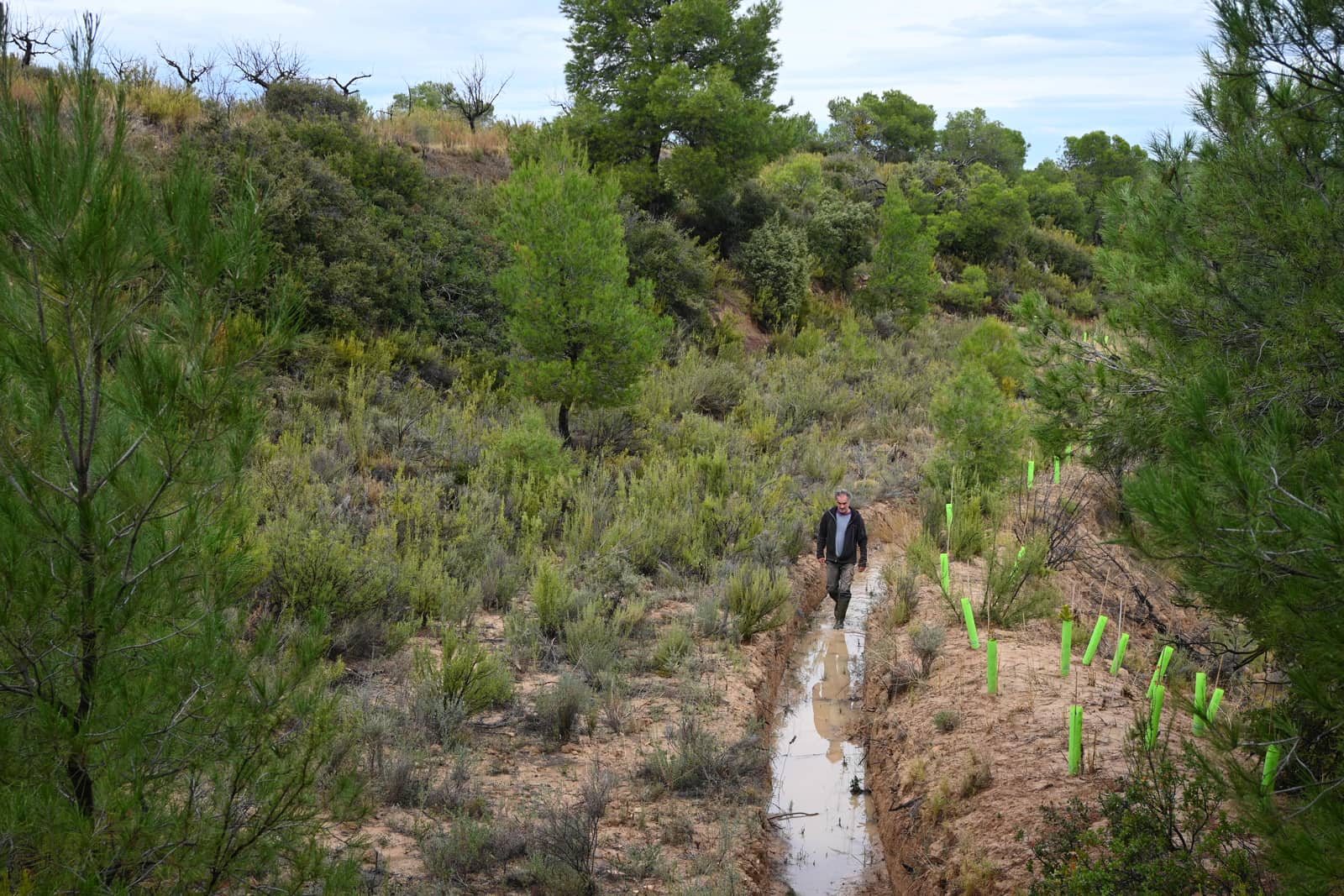Landscape laboratory for the enrichment of abandoned orchards in the Barranco de Tremps, Matarraña, Aragón, Spain
Downloads
DOI:
https://doi.org/10.7480/spool.2021.3.6218Keywords:
Landscape architecture, in situ design research, semi-arid landscape, land management, maintenance, fresh water resource management, rainwater harvesting, reforestationAbstract
The Barranco de Tremps is one of many valleys in the vast hills of the region of Aragón, in the northeast of Spain. A barranco is a natural watercourse created by excessive rainfall, visible only as a dry river bed in summer. Such watercourses and riverbeds are no longer present in this valley.
Today, the valley is full of olive and almond orchards surrounded by pine forests. Summers are increasingly hot and without rain. Since the advent of the tractor in the late 1980s, the soil is ploughed more often and more deeply, and there is little soil life left. During the winter months, wind and rain erode the bare soil, which absorbs almost no rainwater. The water retaining old stone walls have been breached by new wider tractor access paths, through which rainwater also washes away.
Eight hectares of orchards and forest in this valley are owned and cared for by a landscape architect and her partner. A longing to work closer to nature and a desire to transform a semi-arid area into a rich and biodiverse landscape brought them to this spot. They are exploring old and new horticulture techniques to enrich the terrain with diverse planting, to improve soil quality and increase its ability to hold water. Some of these experiments fail, some succeed. In this in-situ laboratory, all experiences contribute to the knowledge of the relationships between soil, vegetation, land use, cultivation, and water cycles.
This visual report gives an impression of the terrain, shows the various experiments of the past two years and the gradual development of spatial principles for design and management.
How to Cite
Published
References
Barrios Ayala, L. (2018). Evolving Lower Guadiana, Lourdes: a regional strategy for the Bajo Guadiana River Valley. Landscape Regeneration, Sustainable Local Production, Green-Blue Accessibility. AHK, Amsterdam.
Comarca del Matarraña, universidad de Catalunya, ARC (2010). Carta del Paisaje de la Comarca del Matarraña [Map of the Landscape of the Matarraña Region].
Götsch, E. www.agendagotsch.com; www.lifeinsyntropy.org
Holzer, S. (2012). Desert or Paradise: Restoring endangered Landscapes Using Water Management, Including Lakes and Pond Construction. Chelsea Green Publishing.
Jarman, D. & Sooley, H. (1995). Derek Jarman’s garden, a record of an evolving garden in a desolate area. Thames and Hudson.
Molinson, B. (1988). Permaculture, a designer’s manual: References and advice to create and design sustainable systems. Ten Speed pr.
Raxworthy, J. (2018). Overgrown: practices between landscape architecture and gardening. MIT Press.





